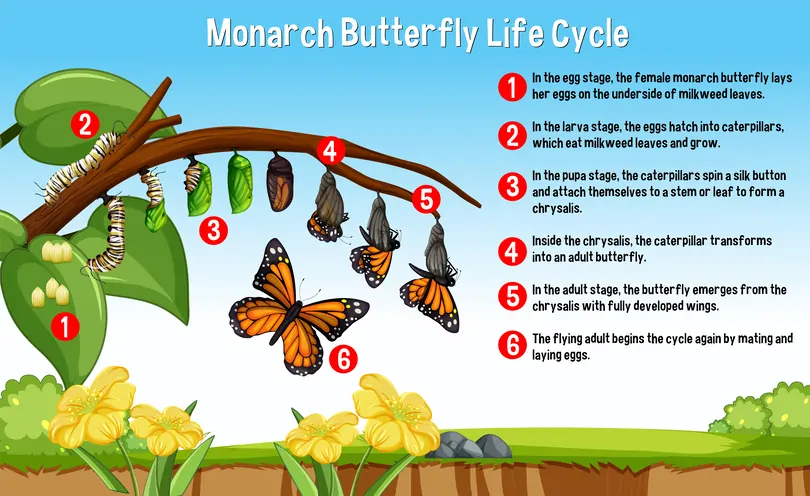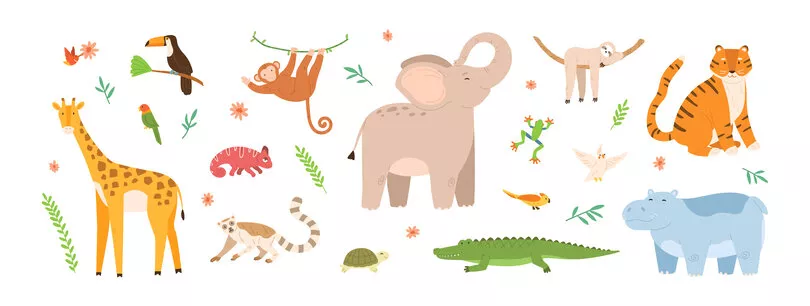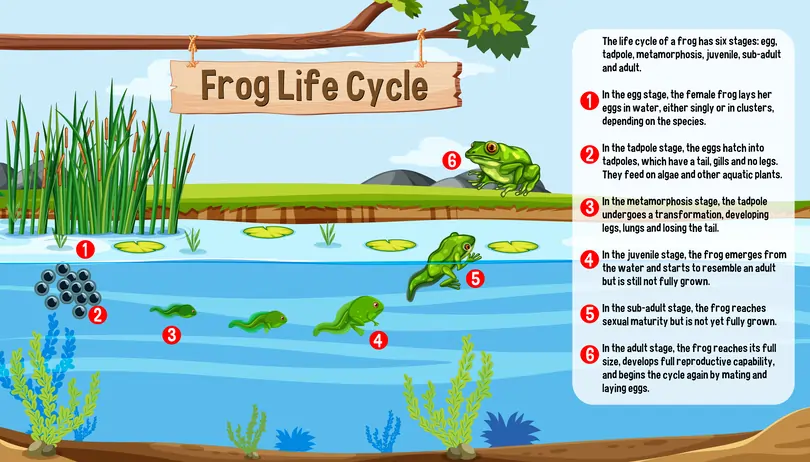Learn the Life Cycle of a Butterfly

(Image by brgfx on Freepik)
Butterflies, renowned for their vivid colours and graceful flight, are truly remarkable insects. In this article, we will embark on a comprehensive exploration of the intricate stages in the life cycle of a butterfly, delving deep into each phase to gain a thorough understanding.
👉🏻 If you wish to learn more about the notable butterfly species commonly found in Singapore, give our article on the Butterfly life cycle (4 stages explained) a read.
Stage 1: Egg
The life cycle of a butterfly begins with the egg. Female butterflies, with a keen sense of selection, choose specific host plants where they deposit their eggs. This choice is critical as the chosen plant will serve as a primary food source for future caterpillars. Butterfly eggs come in various shapes, sizes, and colours, often resembling exquisite pearls. They are strategically attached to the leaves, ensuring the caterpillars' survival.
Stage 2: Larve
After the egg stage, the butterfly's life cycle moves on to the larval phase with the emergence of a hungry eater—the caterpillar. This stage is all about continuous feeding and remarkable growth. As the caterpillar devours its food, it undergoes multiple moults, shedding its old exoskeleton to reveal a fresh one beneath. This process is similar to changing clothes to accommodate the caterpillar's expanding body.
Stage 3: Pupation
After the larval feeding frenzy, the butterfly's life cycle takes a pivotal turn with pupation. The caterpillar, having completed its voracious eating, enters the pupal stage by forming a protective casing around itself. This casing, known as a pupa, serves as a shelter for the profound metamorphosis occurring within.
Within the pupa, the caterpillar undergoes a remarkable transformation. Its body undergoes a process of restructuring, and the tissues reorganise to give rise to the intricate form of a butterfly. This metamorphic pause inside the pupa is a testament to the extraordinary wonders of nature, showcasing adaptation and renewal.
Stage 4: Chrysalis
The emergence from the pupa is a moment of sheer wonder. The once earthbound caterpillar undergoes a breathtaking transformation, emerging as a delicate butterfly with wings adorned in vibrant colours. Initially, these wings are soft and crumpled, but as time passes, they gradually expand and harden, allowing the butterfly to embark on its maiden flight. This stage signifies not just beauty but also functionality, as the butterfly seeks nectar from flowers, playing a crucial role in pollination
Stage 5: Adult stage
The emergence from the chrysalis is a moment of sheer wonder. The once earthbound caterpillar undergoes a breathtaking transformation, emerging as a delicate butterfly with wings adorned in vibrant colours. Initially, these wings are soft and crumpled, but as time passes, they gradually expand and harden, allowing the butterfly to embark on its maiden flight.
With fully developed wings, the butterfly takes to the skies. This phase is not just about beauty but also about function. The butterfly seeks nectar from an array of flowers, playing a vital role in pollination. During this stage, their primary objective is to find a mate and reproduce, thus ensuring the continuity of their species.
Reproduction and the circle of life
Reproduction is the culmination of a butterfly's life. After finding a suitable mate, the female butterfly lays her eggs on another host plant. This marks the end of her journey, but the beginning of a new one as the cycle repeats itself with the hatching of the next generation of caterpillars.
Frequently Asked Questions
What is the duration of each stage in a butterfly's life cycle?
- The egg stage typically lasts about one week.
- The caterpillar stage can vary but usually spans a few weeks.
- Pupation takes approximately 10 to 14 days.
- The emergence as a butterfly is a relatively swift process, requiring just a few hours.
Why do caterpillars undergo moulting?
Caterpillars undergo moulting to accommodate their growing bodies. As they voraciously consume food and expand in size, their exoskeleton becomes too restrictive, prompting them to shed it and reveal a larger, more accommodating one underneath.
What is the purpose of the caterpillar stage?
The caterpillar stage serves primarily as a growth phase, focusing on feeding and accumulating energy. This energy is essential for the subsequent pupation and transformation into a butterfly.
How do butterflies select their host plants for egg-laying?
Butterflies are highly selective when choosing host plants for egg-laying. Factors like the plant's suitability as a food source for their caterpillars and its ability to provide protection are among the considerations.
Is the life cycle the same for all butterfly species?
While the fundamental stages of the life cycle are shared, variations in the specific details and duration exist among different butterfly species.
What is the significance of the chrysalis stage?
The chrysalis stage is the heart of transformation, where the caterpillar undergoes a remarkable change, transitioning from a larva to a butterfly. This stage is crucial for the butterfly's survival and reproduction.
To conclude, the life cycle of a butterfly is a masterpiece of nature, showcasing intricate stages that symbolise adaptation, transformation, and the perpetuation of a species. As we unravel these stages, we gain a deeper appreciation for the beauty and resilience of these captivating insects, underscoring the fascinating wonders of the natural world.
 SG
SG  VN
VN 














